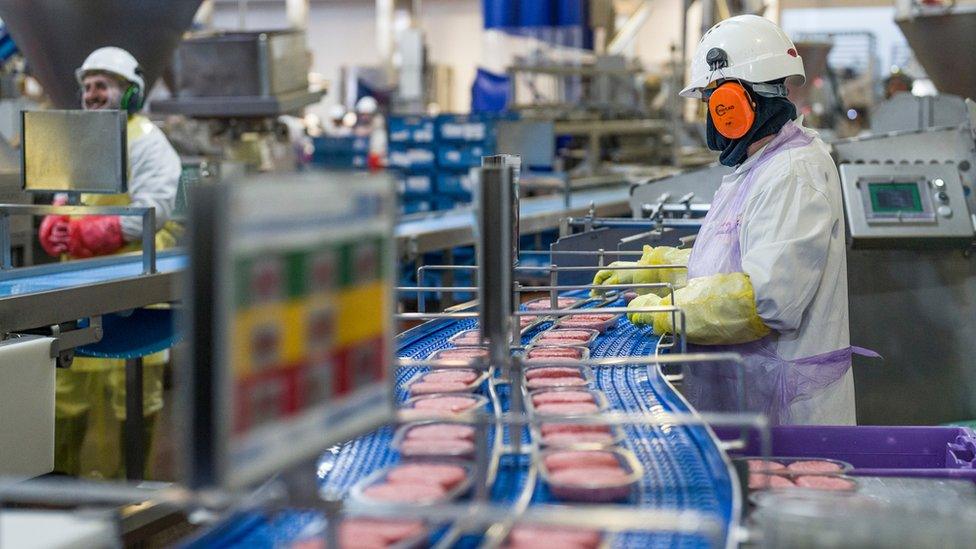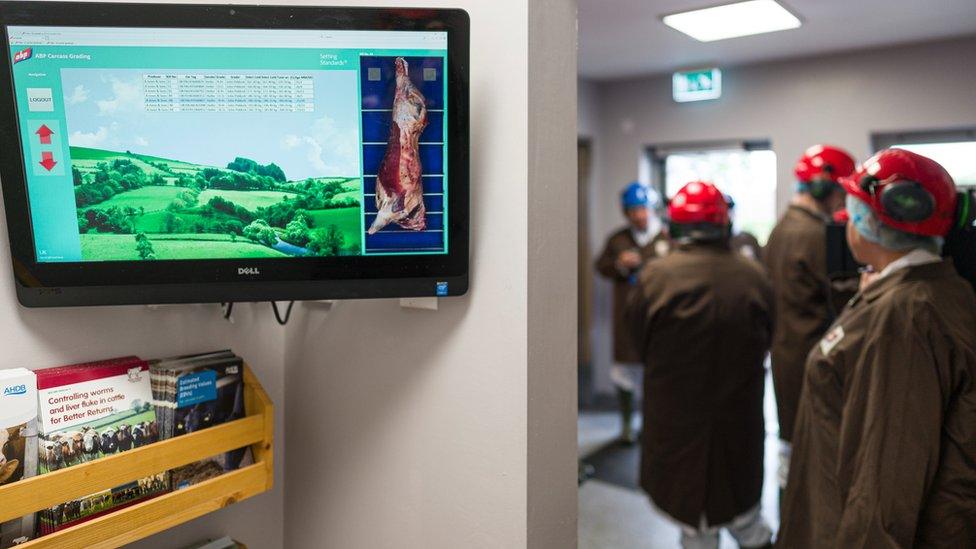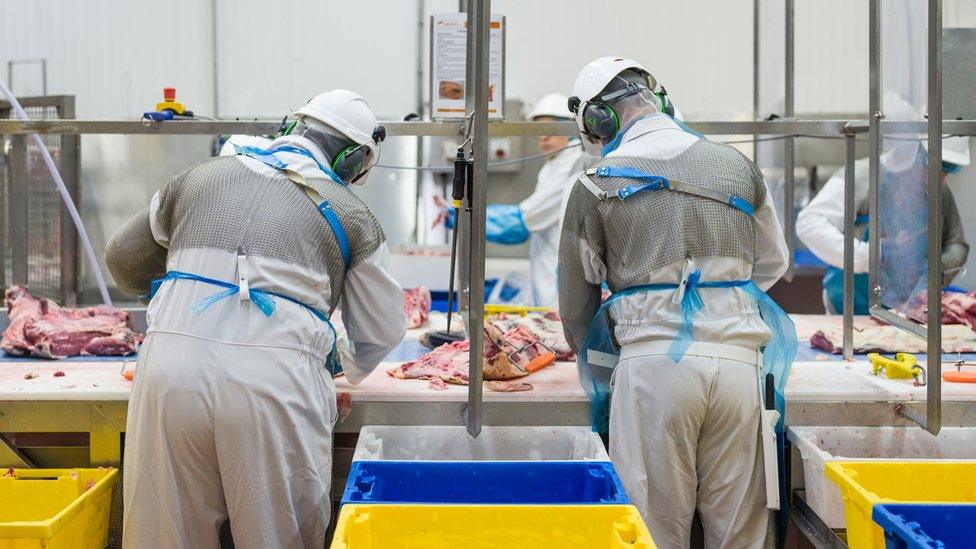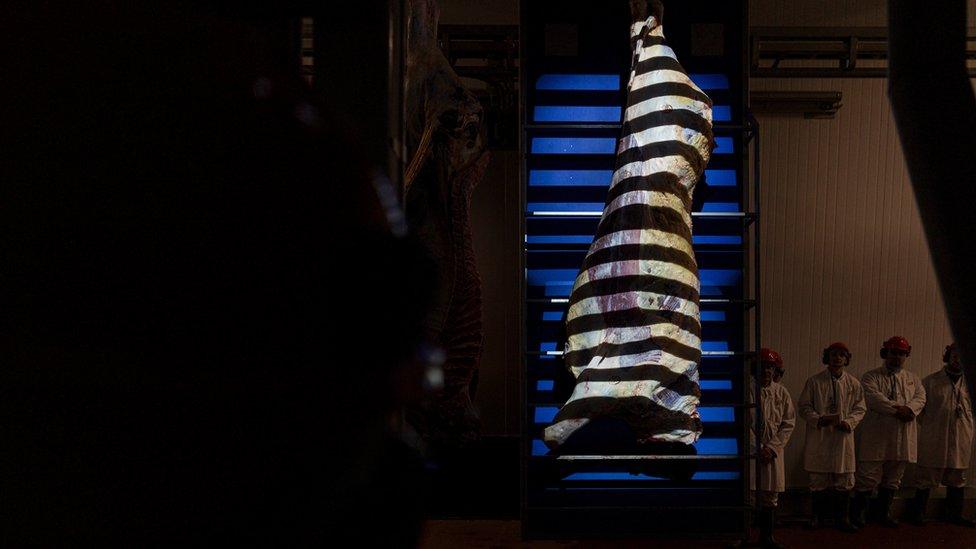Abattoir's juicy steak and big green claims
- Published

ABP also produces burgers, meatballs and even ready meals, most destined for supermarkets.
Every year in Birmingham the National Farmers Union (NFU) holds a conference. And there's always a dinner, which always features a steak. Produced by the red meat processor ABP.
I've attended the dinner on several occasions and it really is one of the best steaks I'll have all year. For that audience it really better had be.
And now I've finally had a chance to see the processing plant behind the steak. One very hot morning I travelled to Ellesmere in Shropshire and the ABP abattoir.
Just before lockdown the company made a £40m investment in the site and this was a rare chance to go behind the scenes.
As a meat eater and Rural Affairs reporter, it's important to understand the reality of what a nice juicy steak involves.
ABP are making some big claims about the environmental impact of their revamped plant. At a time when farmers are facing questions about the carbon footprint of meat production, I was very interested to find out more.

Images of carcases and data analysis are emailed to farmers and also displayed in the waiting room
The Ellesmere site itself is huge. The company says it's around 15 football pitches in area and that more than 1,000 people work there. After the upgrade it's also highly automated and bristling with technology.
But my tour started where the journey for the cattle ends, and that's the lairage. When I visited just over 30 cattle had freshly arrived and they were waiting quietly and apparently happily.
The route they follow is a series of loops that curve back on each other, something that keeps them calm according to research. The space is airy, with natural light and fans to bring in plenty of fresh air.

More than 1,000 people work on the plant's production line
After slaughter, the carcasses move along a fast and much noisier production line with plenty of people and lots of high-tech equipment.
Very early on, the cattle carcasses swing through a sort of meat photobooth. Hundreds of measurements are taken along with photographs which are all fed back to the farmer, via email or instantly on screens in a waiting area.
There are lots of reasons for gathering so much data. Obviously the supermarkets, where most of this meat will end up, have set standards on what they think we want. Stuff like the amount of fat in a steak.
But farmers can also link it directly to what an animal has been fed and how long it took to raise. Interestingly, ABP says this data could also be used to help reduce the carbon footprint of animals.

The 'meat photobooth' uses these shadow lines for some measurements to assess the quality of the carcass in seconds
With all this machinery and technology operating in a refrigerated environment, the plant uses a lot of energy but it now generates all its own power.
It uses tallow, a by-product of the slaughtered animals, to power generators that produce electricity for the plant and even has some left over for export to the grid.
The lessons learned in this massive makeover will be applied to other ABP plants, but perhaps more interesting is the potential for this plant to help farmers reduce the carbon footprint of their beef even further.
No doubt that will give people plenty to chew over at the NFU conference in February next year. While chewing over a very good steak from ABP.
